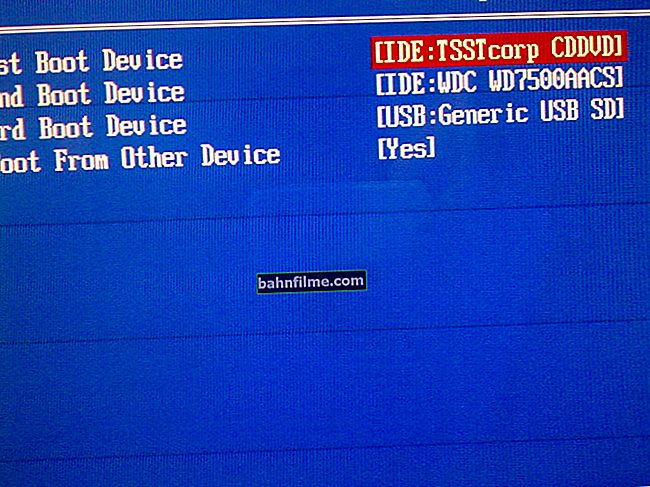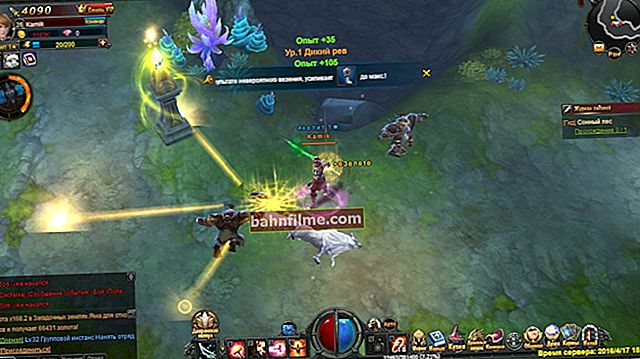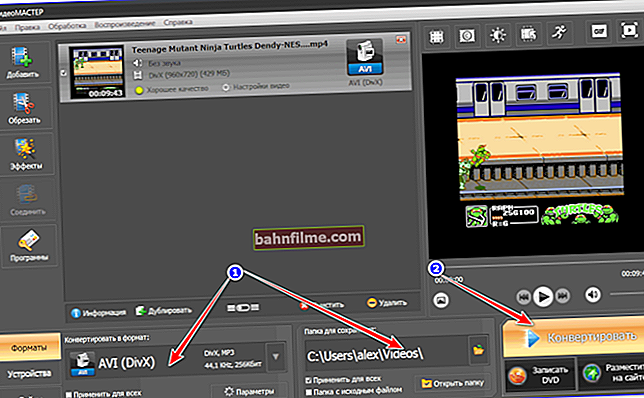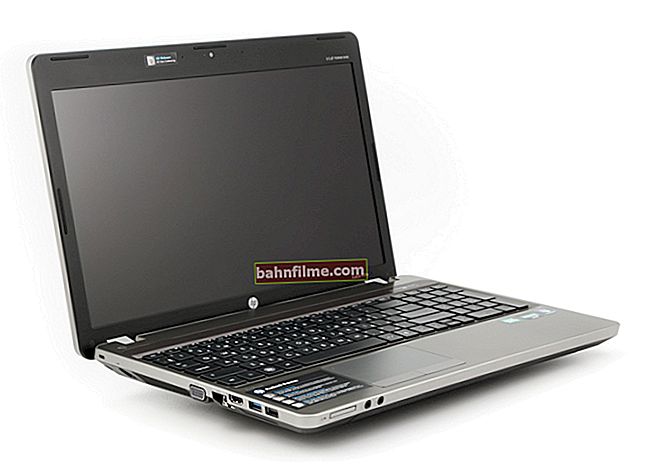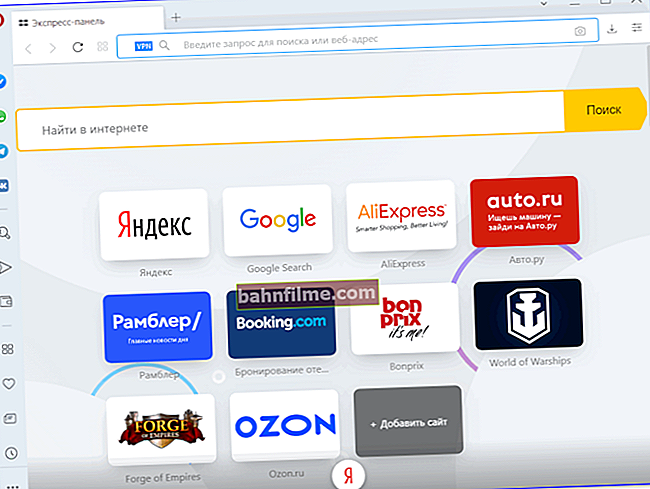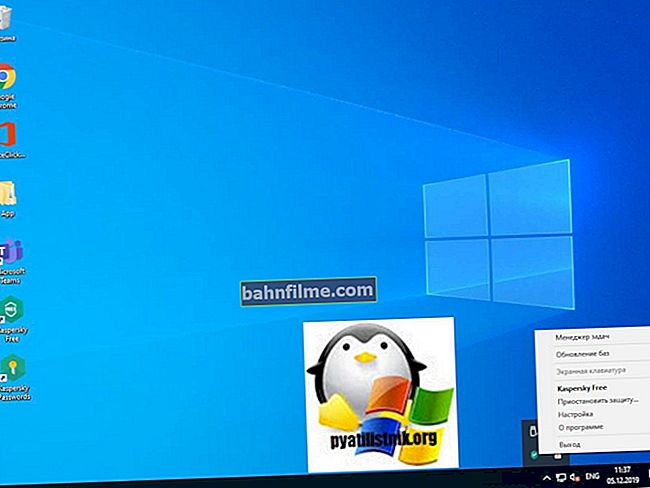 Hello!
Hello!
Many users have files (documents) that they would like to hide and hide from other prying eyes 👀.
This can be done in different ways: both with the help of the simplest available Windows tools (protection against newbies), and with the help of encrypted disks (which even specialists cannot open without a password).
In this note, I decided to give several similar methods that will help you hide your folders / files from all curious people. As they say, you put it away - you take it closer ... 👌
Okay, let's get to practice ...
*
👉 Close to topic!

How to put a password on a folder, file or USB flash drive - step by step examples.
*
Ways to hide a folder and make it invisible
Option number 1: use the capabilities of Windows
I took the folder located on the desktop (for clarity). Of course, for even more masking, the folder can be moved from the desktop to the farthest "corner" of the disk ...
Note: I show my examples in Windows 10 (as the most modern one for today).
Method 1
And so, first we open properties folder (by clicking on it with the right mouse button and calling the explorer context window). See example below. 👇

Go to folder properties
Further in the tab "General" put a tick in front of the attribute "Hidden" , and click on "Apply" (see screenshot below 👇).

Putting a hidden attribute
Then we open "Conductor" (combination of buttons Win + E), click on the menu "View" and go to parameters .

Explorer options
Further in the tab "View" (at the very bottom) move the slider to the mode "Do not show hidden files, folders and drives" ... We save the settings. 👇

Don't show hidden folders
Woo-a-la ... The folder has disappeared from the desktop.

There is no folder, but it is ...
Now, to open it, you can go in two ways:
- either again enable display of hidden files and folders (how to do it - see above 👆);
- or install a commander for yourself: Total Commander, FAR, etc.;
- or open the explorer, select the desktop from the menu, put a backslash and write the name of the folder (that is, set the correct path, in my case: "Desktop \ New folder", without quotes!).

How to open a folder with the attribute hidden
*
Method 2
This method differs in that even if you enable the display of hidden files, our folder will remain invisible! This is done using invisible icons ...
And so, again I take the usual folder on the desktop.

Desktop folder (for example)
Next, you need to rename it in a "tricky" way: delete the name, and then hold down the ALT key and press 255 on the numeric keypad (which is on the right).
As a result, your folder name will become invisible, as in my example below.
Note: if you have a laptop that does not have a numeric keypad, pay attention to the FUN key, it often allows you to solve this issue ...

Make an empty folder name
After we open properties our "nameless" folder.

Folder properties
Go to the tab "Settings" and click on the button "Change icon" ... Further, among the icons, pay attention to those that have no icons at all (there are usually 3 of them). Select one of them and click OK.

Selecting the invisible icon / Clickable
After changing the icon, you will see that the folder has disappeared from visibility - i.e. it is no longer visible on the desktop!

The folder is hidden - now it is not so easy to find it ...
However, please note that if you open conductor and go to the tab "Desktop" - then you can notice that there is some kind of folder with files that does not display an icon and a name (see the screen below 👇).

To start the explorer - press the combination Win + E
That is why, it is advisable to use these methods in combination and hide the folder not on the desktop (each user has too much attention to it ...).
*
Option number 2: add the folder to the archive with a password (7-ZIP or WinRAR)
If you are worried about the safety of your files, and you have neither time nor special desire to deal with ingenious programs, then you can reliably hide files from prying eyes using a regular archive.
Note:
1) by adding files to the archive and setting a password - no one will be able to view even the name of your files without entering the correct password! Note that even you cannot do this if you forget your password (so be very careful).
2) You can also put a hidden attribute on the zipped archive (as we did for the folder just above in the article), and then the explorer will not display it ...
*
And so, in my example I will use the archiver WinRARsince it is one of the most popular (you can also use its counterparts, so that almost all of them have a similar function).
Right-click on the desired folder, and in the context menu, select "WinRAR -> Add to archive ..." .

Add folder to archive
Next, click on the button "Set password" .

Set password
We indicate our password and put a tick "Encrypt file names" (I recommend that you enable this so that no one can find out what files are in your archive).

Set a password and enable encryption
Actually, these are all settings. After that, start the archive creation procedure and wait for it to complete.
Received archive ("New folder.rar") you can't just open it - when you try to do this, you will be asked to provide a password. Task completed 👌.

Encrypted folder (now you need to enter a password when opening it)
Note. After entering the correct password, the archive will be opened and you can fully work with it. See screenshot below. 👇

If you enter the correct password, you can start working with the folder
*
Option number 3: use an encrypted disk
There are a number of programs (True Crypt, Disk Cryptor, Vera Crypt, etc.) that allow you to create encrypted virtual disks, to access which you need to enter a password.
Note that files of such disks can be "hidden" on your HDD so that they cannot be seen with the help of Explorer.
Encrypted disk is a regular file (like an ISO image, for example), inside which certain files are stored. To decrypt it, you must enter the correct password.

True Crypt - screenshot of the program window
In general, if you have already worked with ISO images, MDF, etc. virtual disks - then, I think, the principle is already familiar and clear to you. A similar image is created on the HDD, only a password is needed to access it.
To open it, you need to mount (i.e. open it) in the program in which it was created (everything is quite simple: see the screen below 👇).

Mount an encrypted disk / True Crypt
*
👉 Help!

How to create an encrypted disk (i.e. create a disk with a password for accessing files).
PS
If you have Windows 8/10 Pro installed, take a look at BitLocker. With this thing, you can password-protect a disk or USB flash drive.
To get started: just connect the desired drive to your computer, go to "This computer" and right-click on it - in the context menu, select Enable BitLocker .
Next, you will need to set a password to access the drive files.

Enable BitLocker / Windows 10
After that, your disk will be displayed with a lock. To access it, you will need to enter a password (otherwise, nothing ...). Pretty handy!

Unlock disk
*
That's all for now, all the best!
👣
First publication: 11.02.2019
Correction: 10/15/2020
